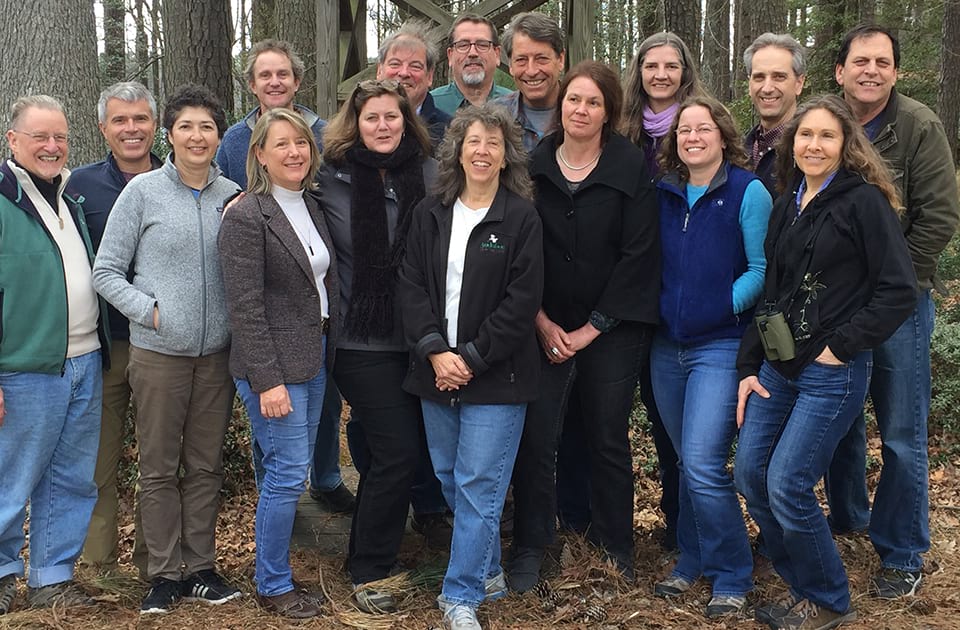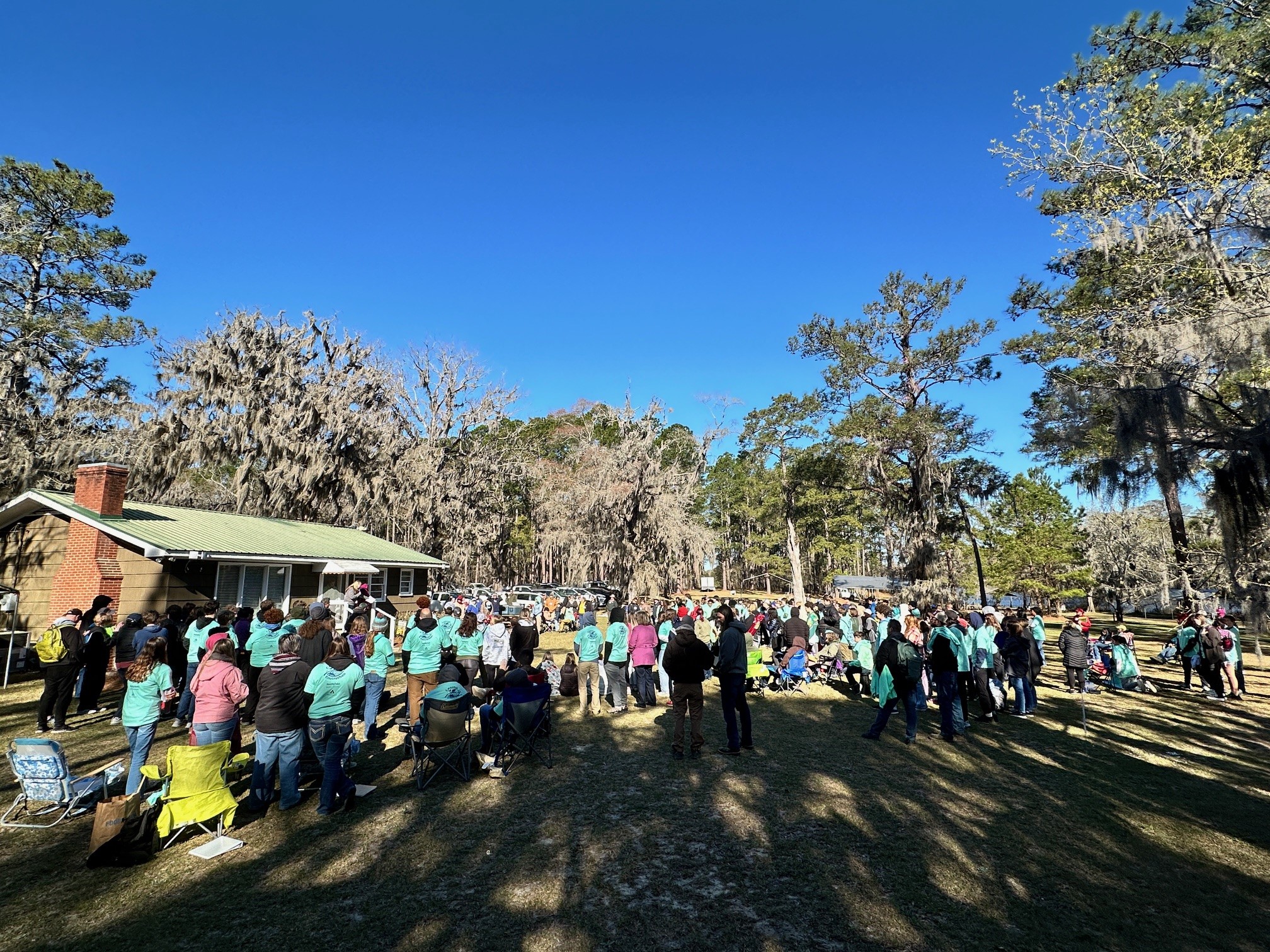
A 2018 photo of the Partners in Flight Steering Committee. Henning Stabins (second from left, back row) serves as the forest industry representative for Partners in Flight, a network of partner organizations engaged in all aspects of bird conservation. That’s where he met NABCI coordinator Dr. Judith Scarl (second from right in front, in blue vest), who invited him to contribute to the NABCI guide. “It’s satisfying to bring a unique business-oriented perspective to the conservation partnership table,” Henning says.
In 2019, a high-profile report in the journal Science shocked conservationists with a sobering statistic: North America has lost 2.9 billion birds since the 1970s.
It’s not just bad news for bird lovers. Like the proverbial canary in the coal mine, the presence of common birds tells us a lot about the health of many habitats and ecosystems, including our own timberlands. That’s why we believe it’s so important for companies in our industry to collaborate with conservation groups to create voluntary partnerships and identify shared goals.
The nonprofit North American Bird Conservation Initiative literally wrote the book on building these partnerships, and the group called on our own Henning Stabins, a wildlife biologist, to play an important role in its development.
In fact, Henning was the sole corporate representative on the team of 40 contributors to NABCI’s “Field Guide to Developing Partnerships,” which was released in January.
DRAWING ON A LONG HISTORY OF COLLABORATIONS
Henning, who’s based in Maine, helps manage environmental programs in our Northern Hardwoods region, including our approach to wildlife protection and sensitive sites.
Throughout his 26-year career, he’s worked with conservationists and other partners to protect grizzly bears in Montana, spotted owls in Washington state, songbirds in Michigan, and salamanders, deer and bats in the Northeast, just to name a few.
“Building partnerships is a crucial part of my role,” Henning says. “Success is rooted in positive relationships. You have to take the time to know people, gain mutual trust and credibility, understand their approach and objectives, and then find common threads.”
SHARING A LOVE FOR HEALTHY ECOSYSTEMS
NABCI’s guide is designed to help conservationists reach out to potential partners such as state agencies, non-governmental organizations, hunters, anglers, land trusts, private companies and community associations, and to develop long-lasting relationships that benefit everyone involved.
Henning’s contributions will help organizations understand how to work with Weyerhaeuser and the private sector in general. We often collaborate with partner groups on research projects and use the learnings to continually improve our sustainable forestry at all scales, from single stands to regional conservation planning.
“Some potential partners may look at the corporate world as entirely profit-driven, not realizing that sustainability and environmental stewardship are critical to the future of our industry,” Henning says. “That can make them hesitant to reach out. We have shareholders and financial objectives, but healthy forest ecosystems drive our entire business model, and we’d like partners to approach us with that in mind. We’re eager to work together.”
BUILDING COALITIONS THAT GET THINGS DONE
Though it focuses on birds, the guide will come in handy for all kinds of conservation efforts. Its creators aim to demonstrate that wildlife protection goals align with human needs such as clean water, recreation and economic prosperity.
One example is the shrinking of California’s Salton Sea, which is making the region inhospitable to a number of species. And the less water there is, the more the wind kicks up dust and pollutants, worsening regional air quality.
Addressing root causes could improve human health while also restoring bird populations. But to succeed, environmental groups must build coalitions with people who don't share bird conservation as a primary concern.
“When we think beyond birds, we can build broad and diverse partnerships with positive impacts that reach far beyond what we can do within bird conservation alone,” Dr. Judith Scarl, NABCI coordinator and Bird Conservation program manager, said in the release announcing the publication. “We hope this guide will be a tool of empowerment and encouragement, giving us that extra push we may need to research a new partner, pick up the phone, consider a new perspective, and expand our thinking.”

